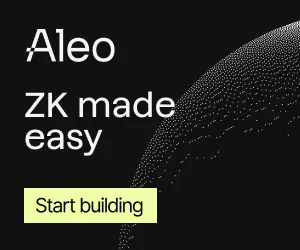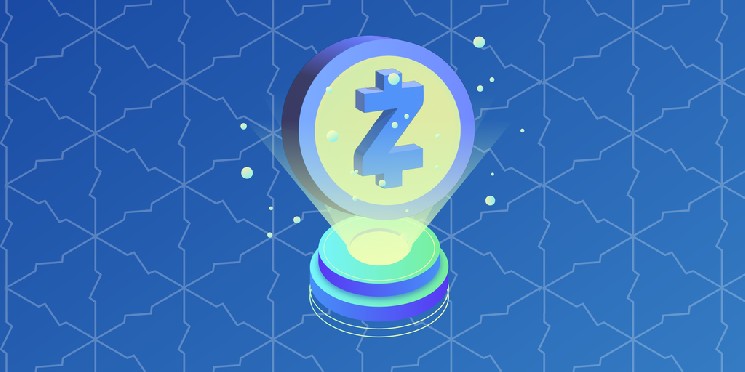For many years, Bitcoin It was believed to be anonymous and was used to buy drugs online. As it turns out, tracking Bitcoin transactions is surprisingly easy. On the other hand, Zcash is cryptocurrency It promised something that Bitcoin failed to deliver: privacy.
How Zcash works
Zcash is designed to hide key transaction details such as sender, recipient, and amount. The use of cryptographic techniques allows for transfers that cannot be easily tracked on public ledgers while still being verifiable by the network.
With Zcash, transactions can be made transparent like Bitcoin or private using zero-knowledge proofs known as zk-SNARKs. This encryption verifies that a transaction is valid without revealing the sender, recipient, or amount. If a coin is fully secured, i.e. the tokens in a private pool are not linked to any transaction history, then it is a fungible cryptocurrency. However, most Zcash coins exist in transparent pools and maintain a visible history, similar to Bitcoin.

The network maintains two address pools: transparent (t-addrs) and shielded (z-addrs). Wallets such as ECC’s Zashi now protect funds by default and encourage increased privacy.
Who invented Zcash?
Zcash was launched in October 2016 as a privacy-focused cryptocurrency developed by Zuko Wilcox O’Hearn’s Electric Coin Company (ECC), based on research from Johns Hopkins University, MIT, Tel Aviv University, and other institutions. Similar to Bitcoin, Zcash (ZEC) has a maximum supply of 21 million coins and the block reward is halved every four years.
Although ECC started Zcash and continues to contribute to Zcash, ECC does not own or control Zcash. blockchain. All upgrades require community approval, keeping development decentralized and open rather than directed by a single actor.
Did you know?
At its launch, Zcash relied on a “trusted setup ceremony” in which six participants each generated and destroyed a portion of their private keys. This made it impossible for anyone to counterfeit ZEC.
In April 2022, Edward Snowden was revealed as one of the participants in the ceremony. “He did it as a service, as a public good, and because he believed in privacy,” said Electric Coin Company SVP Josh Swihart. decryption.
important dates
- May 2013: The Zerocoin proposal at Johns Hopkins University marks the beginning of privacy-focused crypto research that will lead to Zcash.
- January 2016: Zooko Wilcox has officially announced the Zcash project as a privacy-oriented Bitcoin fork.
- October 2016: Zcash will launch after a trusted setup ceremony and your network will be up and running. Zcash hit an all-time high of $5,941.80.
- October 2018: A sapling upgrade is enabled to improve the speed and efficiency of shielded transactions.
- November 2020: Zcash is undergoing its first halving.
- May 2022: Network Upgrade 5, which includes the Orchard upgrade, has been rolled out, reducing reliance on the previous complex setup “rituals” for new shielded pools, and allowing Zcash users to make private digital cash payments on their mobile phones using a new address format called unified addresses.
- April 2022: Edward Snowden has been publicly identified as “John Dovertin”, who was a participant in the original launch ceremony and contributed to the reliable setup, but was not the architect.
- November 2025: Zcash’s third halving will occur, reducing block rewards and simultaneously transitioning to a new development funding model.
How is Zcash generated?
Zcash uses proof of work (PoW) to verify transactions, similar to Bitcoin, but it runs on the Equihash algorithm (a memory-hard hash function designed to make mining fairer and more resilient to ASIC hardware) and the consensus mechanism that Zcash originally employed to secure its network.
Currently, Zcash miners receive 80% of each block reward, with 20% going to Electric Coin Company (ECC), the Zcash Foundation, and a development fund that supports community grants. This development funding structure is governed by community decisions and will be updated or revised after the next halving.
Zcash is a peer-to-peer cryptocurrency designed for everyday payments. Users can choose between transparent trading, which is friendly to regulators, and secured trading, which enhances privacy. This optionality has allowed Zcash to remain listed on more major exchanges than other privacy coins such as Monero, which are circumvented by certain platforms due to regulatory constraints.
Zcash is at a crossroads. With a halving, a new development financing model and significant infrastructure upgrades all scheduled for 2025, the project is at a defining moment. How these changes are handled will determine whether cryptocurrencies built on voluntary privacy can withstand a landscape of increasing regulatory and market pressures.
Bitcoin has had a huge impact on Zcash. Like the number one cryptocurrency, Zcash is designed to be used for everyday purchases. It has a variety of privacy features, so it can also be used to send and receive transactions hidden from prying eyes.
Zcash, regulators and law enforcement
Regulators and law enforcement agencies around the world have increased scrutiny of privacy coins, arguing that their anonymity features could be exploited for money laundering and sanctions evasion. In the United States, the Treasury Department’s Financial Crimes Enforcement Network has proposed tightening rules for “anonymity-enhanced virtual currencies.”
“Several types of[anonymity-enhanced cryptocurrencies]including Monero, Zcash, Dash, Komodo, and Beam, have grown in popularity and use technology that makes it difficult for investigators to trace blockchain transactions or link them to individuals involved in illegal activity,” the regulator wrote in 2020.
As the crackdown on the cryptocurrency market intensifies, exchanges have begun delisting privacy coins. In November 2020, privacy-focused exchange ShapeShift delisted Monero, Dash, and Zcash to limit its regulatory risk. In January 2021, Bittrex delisted Zcash, Monero, and Dash, and more recently OKX announced plans to delist the same privacy coins in 2023. As of 2025, Zcash was still listed on Binance, but in April it was added to the exchange’s list of cryptocurrencies that the community can vote to delist.
The future of Zcash
Zcash is at its most important moment yet as regulators tighten their scrutiny of digital assets and privacy coins come under increased scrutiny. A halving, a major funding overhaul, and a move to new software have all come together to test whether privacy-focused cryptocurrencies can survive under pressure.
Nearly a decade after its launch, Zcash has once again gained traction for market reasons. In October 2025, the token soared nearly 240%, reaching its highest price since May 30, 2022, when it reached $192.00. Zcash’s rise was fueled in part by prominent figures on social media highlighting Zcash’s community, privacy design, and technical improvements.
Zcash’s third halving is scheduled for November 2025. The current development fund will end at the same time, and the community is discussing new mechanisms. ECC is deprecating the C++ full node “zcashd” in favor of the Rust-based “zebrad” and is also developing a new wallet called Zallet.
These changes will shape Zcash’s cryptocurrency, funding model, and user experience for years to come.


